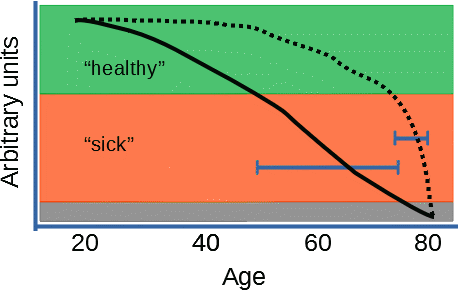Some time ago, I worked for a company called “Zephyr Technology“, a start-up firm with a background in professional sports physiology and “prosumer” wearable cardiac, respiration and activity monitoring. We branched into the regulated healthcare market, specifically remote patient monitoring which wasn’t exactly new then but fundamentally lacked dedicated, usable sensors which of course we had.
The transition from health & fitness (I am still not comfortable with the word “wellness”) into regulated medical devices affected us a little more than “just” adopting FDA guidelines for documentation and product development. We had come from a market where the user (i.e. the person who wears our sensors) is actively engaged in his/her own understanding of the physiology and health. We naively brought our attitude into the healthcare market and very quickly realized that none of our customers (e.g. hospitals, nursing homes, outpatient clinics) had the faintest hope that their patients would a) understand anything about our devices and systems, b) care enough that they would use it outside very strictly enforced schedules and c) had any curiosity about their own health. Basically, our customers assumed that “patients” are completely detached from the decision process that affects their own health.
To be honest, that was a tough pill to swallow. We had built a device, system and – yes – business to assist engaged users maintain, improve or regain their health. Now we were asked to deploy pretty much the same system to disengaged patients to monitor, observe and alert on their decaying disease status. It was less an engineering change, more of a philosophical” one and we struggled for a long time to adapt to our new reality.
During this adoption time, our CEO, Brian Russell developed an interesting graphical approach for our “vision” of a healthcare system.

The “green zone” is the “healthy” state, one where the healthcare costs are also at a minimum. The slow decay (solid line) into a “sick” state is driven by various societal factors but also by lack of early diagnostics and prevention. The “healthcare system” fully engages in the “orange” zone and maintains the patient until death. Its simple, the longer the patient stays in this zone, the more cost incur but also the less quality of life the patient has. Of course, I am omitting all accidents, infectious diseases and those that have genetic or other environmental origin. In the ideal model of course (dotted line), the patient / user / person is encouraged to remain in the green zone by frequent monitoring and life-style interventions, coaching and support. The inevitable decline comes quickly (hence “cliff”) , incurs minimum suffering and costs.
I always liked this figure in our pitch presentations since illustrates the concept that keeping a person in a healthy state longer doesn’t necessarily extend life but drastically reduces costs and increases quality of life. The figure also suggest a much greater role for a true healthcare system than current. But whenever I presented it, the clinical audience shrugged it off, the “green zone” is not reimbursable and hence not part of their kingdom. It is “wellness”, not regulated and subject to snake oil, Reki and Homeopathy. True medical professionals don’t care about the patient, they care about the disease.
That doesn’t make sense at all, the majority of chronic healthcare costs can (easily) be affected by behavioral changes. Reduction of weight, control of blood pressure, cessation of smoking (and other drugs) and control of diabetes have massive healthcare benefits for virtually any organ. So, why not reimburse health and fitness training when “patients” are in their 30s establish solid nutritional and health behavior before disease becomes manifest? It looks to me that only those preventative steps are reimbursable that have to be given by qualified personnel. That feels fundamentally unsustainable and weirdly 19th century thinking.
I read somewhere that in ancient China a doctor was only paid while his patient was healthy. I am sure its a myth but I love the concept, it would create a solid incentive to engage frequently and early and see the care professionals as custodians of health, not managers of disease. Extending this, who says that it is only medical professionals (and their army of administrative support) who can participate in this system? Why not personal trainers, coaches? Why not cooking classes, gardening groups? Why not meditation and faith groups who can give tremendous support to anyone struggling with work of family life? Why does it have to be always a medical professional?
Overall, the term “healthcare” has always irked me since it just isn’t true. We do not have a “healthcare system”, we have a “disease care” system. This is neither intuitive, logical or productive and we need to work on changing it.

